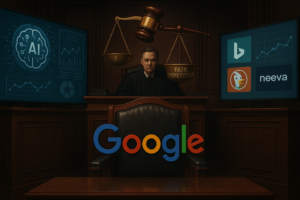Energizing the Future: How AI is Reshaping the Utility Sector
As the demand for energy surges due to advancements in artificial intelligence and data center operations, the utility sector is experiencing a transformative resurgence. This article explores how AI is revolutionizing the utility landscape, enhancing efficiency, and driving investment opportunities.
In an era where artificial intelligence (AI) is redefining industries from healthcare to finance, the utility sector is not left untouched. As we progress into 2024, the convergence of AI technologies with traditional utility operations is creating a paradigm shift that is both exciting and necessary.
Utility companies have often been viewed as slow-moving entities, primarily focused on delivering essential services with limited innovation. However, the pressures of a rapidly evolving technological landscape, coupled with rising demands from data centers and smart technologies, have compelled these companies to rethink their strategies. The introduction of AI into utility management is proving to be a game-changer.
AI Technologies in Utility Management
AI technologies are being deployed to:
- Optimize energy generation and distribution
- Improve predictive maintenance
- Enhance customer service
By leveraging vast amounts of data collected from smart meters and IoT devices, AI algorithms can analyze consumption patterns, forecast demand spikes, and manage the electricity grid more effectively. This results in not only reduced operational costs but also improved reliability and customer satisfaction.
Predictive Maintenance
One of the most significant impacts of AI in the utility sector is in predictive maintenance. Traditionally, utility companies performed scheduled maintenance based on historical data, which could lead to unnecessary downtime or, worse, unexpected outages. With AI, companies can now utilize machine learning algorithms that analyze real-time data to predict equipment failures before they happen. This proactive approach minimizes disruptions and maximizes efficiency, allowing utilities to allocate resources more effectively.
Integration of Renewable Energy
Moreover, as the world shifts towards renewable energy sources like solar and wind, AI can play a pivotal role in integrating these variable energy sources into the grid. AI systems can:
- Predict weather patterns
- Optimize energy storage
- Balance supply and demand
This ensures that renewable energy can be harnessed effectively, supporting sustainability efforts and enhancing the resilience of the energy supply.
Financial Implications
The financial implications of AI in the utility sector are also notable. As companies embrace these technologies, investors are beginning to take notice. The potential for increased efficiency and reduced costs presents a compelling case for investment. Analysts are optimistic that utility companies leveraging AI will experience growth in market value, making them attractive opportunities for investors looking to enter this burgeoning sector.
Challenges in Integration
However, the integration of AI into the utility sector is not without its challenges. Key factors include:
- Data privacy concerns
- Regulatory hurdles
- The need for significant upfront investment in technology infrastructure
Additionally, there is a pressing need for skilled professionals who can effectively manage and analyze AI systems, which may necessitate new training programs and partnerships with educational institutions.
As utility companies harness the power of AI, they are not only improving their operational capabilities but also positioning themselves for a more sustainable and profitable future. As we move forward, the intersection of artificial intelligence and utility management will continue to evolve, paving the way for innovations that will shape the energy landscape for years to come.


